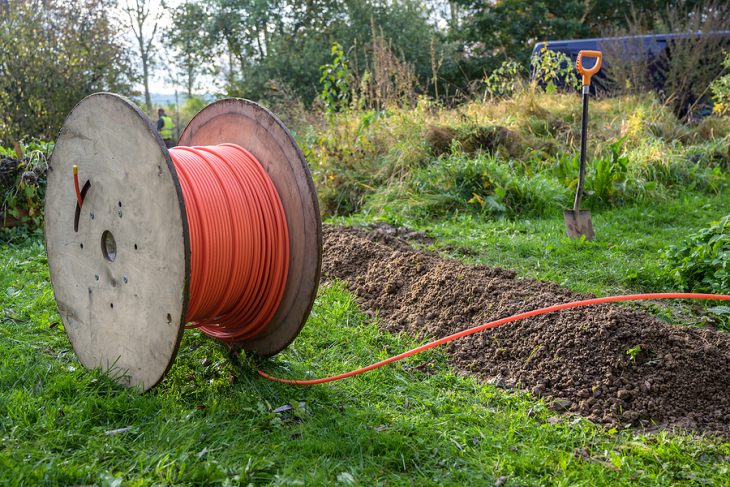
Combined $4B in funding going into the effort
By Ahmad Hathout
TORONTO – Ontario wants to connect all households in the province to high-speed internet by December 2025, starting with a reverse auction, this summer, for billions in funding.
The province’s infrastructure ministry announced Friday the auction will be open to projects that rely predominantly on fibre, with some fixed-wireless where applicable. The ministry says fibre is future-proofed because of its ability to scale-up to speeds as high as a gigabit – and the provincial government wants these funds to be disbursed and projects to begin very quickly.
The total pot of money available is now $4 billion, according to a Friday press release. “This transparent and competitive process will enable Internet Service Providers (ISPs) to bid for provincial support through a series of reverse auction events for defined geographic areas, and based on requirements for high-speed internet infrastructure deployment,” the release said. Prior to the release, Cartt.ca was told this announcement for Ontario rural broadband projects was to include a contribution from the federal government’s Universal Broadband Fund, but those details were not a part of the release and it doesn’t appear UBF money is built in.
Winners of the reverse auction, which is a relatively unusual choice since public broadband funds are often doled out only after detailed application processes, will be those internet service providers which can show they need the least amount of subsidy for a particular build in a given unserved or underserved area. The subsidy will be handed out only after work is completed and will be on a fixed dollar amount per premise basis. The province said this will ensure it gets the best value for its money.
Those who fail to build according to the timelines laid out in the funding agreement will be subject to penalties under Bill 257, or the Build Broadband Faster Act, which was passed in April.
“Ontario is now one of the few jurisdictions in Canada with its own comprehensive and proactive plan to achieve full connectivity,” the release added. “Over the coming weeks, the Province plans on announcing more projects to bring connectivity to communities throughout the province, along with additional details on how it will help ensure every region in Ontario has access to high-speed internet.”
According to the province, there are roughly 700,000 households in Ontario that lack high-speed internet — defined as the federal government’s objective of 50 Mbps download and 10 Mbps upload — or have no internet connection at all. That speed is the minimum target for the $4 billion in funding.
The plan will also require bidders be licenced with the CRTC and will prefer those that have an existing track record of building success, according to an infrastructure official who spoke to Cartt.ca before the announcement. The ministry will not give any special considerations to smaller ISPs or to any particular communities, like Indigenous ones, because the idea is that this program will provide the entire province with the baseline target speeds, and be the final rural broadband spend using provincial tax dollars.
The infrastructure official said the province is expected to have a separate competitive procurement process, around the fall, to connect the estimated 30,000 or fewer leftover premises after the reverse auction money is used up, still within the 2025 timeframe. For those remaining households unlikely to be reached by fibre, the official said other technologies, including likely low-earth orbit satellites, will be eligible, but a decision hasn’t been made on that yet. LEO projects are not eligible for the first reverse auction.
The province will be using ISED’s new road segment data, which measures connected and unconnected areas down to 250 metres of accuracy. Those areas that already have 50/10 access will be excluded from the funds. However, the infrastructure official did admit because it relies on that data, there is a chance there may be overbuilding as ISED refreshes its data only about every six months.
But he said while that’s unlikely, there remains more of a chance of overbuilding than any area being left unserved, implying the former is better than the latter. Also, since SWIFT, which is another fund mechanism for broadband builds in southwestern Ontario, is under the auspices of the Ministry of Infrastructure*, there’s co-operation on avoiding overlap there, the official pointed out.
The federal government’s $2.75-billion Universal Broadband Fund uses the more accurate mapping to ensure areas already served aren’t overlapped. However, the older Connect to Innovate program, a product from 2016 that still has projects that are not complete, uses the aging hexagon model, which measures coverage by much wider 25-square kilometre areas. If a single household in that area has the required speeds, then the entire area is ineligible for subsidies and is assumed served.
Ontario’s Building Broadband Faster Act also empowers the minister of infrastructure to bypass municipalities or utilities and allow internet service providers to put their broadband equipment on poles owned by those utilities and on municipal rights of ways. If the municipality is unwilling or unable to provide approval for a build, the minister can provide the direction for the ISP.
Before the legislation, Ontario had the highest pole attachment rates in the country. It still does, but under the government’s broadband goals, ISPs will be able to attach their equipment on wholly owned utility poles at a roughly 25% discount, the infrastructure official told Cartt.ca
Last year, too, the province introduced the Improving Connectivity for Ontario (ICON) program, which aims to support cellular projects together with high-speed broadband ones. We believe the $4 billion announced today includes ICON and prior Ontario government broadband and wireless committments (like this one), but that is not completely clear from today’s announcement. The provincial government did commit $2.8 billion more for broadband in its March budget and said then its total investment was near $4 billion.
The foundational components to bring 50 Mbps download and 10 Mbps upload speeds to the entire province by 2025, therefore, seem to be in place.
Infrastructure Ontario will also be holding a webinar on July 26 involving ISPs to go over the auction process, including commercial and security terms for receiving funding.
Ontario’s move follows Quebec’s own drive to hook-up the entire province by the end of next year, with a pledge of nearly a billion dollars, half of which will come from the UBF — or 24% of the total fund.
*A previous version of this story indicated SWIFT is under the auspices of Infrastructure Ontario. SWIFT has since informed Cartt.ca this is incorrect and that it falls under the Ministry of Infrastructure.




